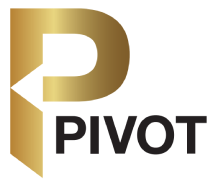In our recent Summer Checklist Blog, we mentioned revising your notes as a great way to ensure success in next year’s classes. You might be thinking to yourself “Rewrite my notes? That’s a waste of my time and energy,” but I assure you that active revision is both far less tedious and a far higher yield activity than you’re thinking. And, when you’re done, you have a slimmed down, handy reference tool that has helped you review last year’s information.
The first step is actually a purge. We’re going to get rid of anything you don’t need (and this works for both physical and digital notes). The question, of course, is what don’t you need?
Get Rid Of:
-
Anything you can super easily google
-
Assignment Instructions
-
Tests and Quizzes
-
Scratchy outlines for completed essays (The essays and the research might be worth keeping if you think you’ll return to the topics or have a special interest in them).
Keep:
-
Lecture slides
-
Handouts from the teacher
-
Handwritten/typed notes from class lectures
-
Completed essays/lab reports
Next steps are organizing and partially rewriting the information. I personally start by rewriting, finding it easier to organize once I have a very clear idea of the material in front of me, but you can take these two steps in either order.
Rewriting
We are not going to simply rewrite/retype the notes that are already there. This teaches us nothing but boredom and carpal tunnel syndrome. Instead we are going to restructure our notes to highlight what is important. If you’re anything like me, you took notes on things that just didn’t turn out to be important. You don’t have to follow all of these bullet points and should absolutely feel free to work in your own note taking style. Whatever helps you learn best!
-
Condense down broad concepts and extraneous details into main ideas, supporting arguments, definitions, and summaries.
-
Include helpful interpretations, methods, or tips from your teachers (And anything they said more than once).
-
Bullet point larger paragraphs or complex topics, breaking them into small more manageable chunks.
-
Write down examples for chemical processes, literary devices, mathematical equations, etc. If you didn’t write one in your original notes, write one now.
-
DON’T write down the things you already know. The longer the notes, the more difficult they are to reference, when you need them. Try to keep things sleek and minimal.
-
Add your own interpretations, thoughts, summaries, or questions. This is YOUR space to think.
-
Try to condense any larger category into a page or two notes. Remember this is for solidifying and referencing information. Not for writing down an entire textbook.
-
Bonus: You can put all definitions and terminology into flashcards instead of on the actual note paper, if you enjoy recall exercises.
Now, choose an organization method. Don’t go into organization blind. Have some sort of plan. The simplest method is simply to divide your materials by class. However, if you have a specific interest and took many History courses or multiple levels of a singular language you might want to divide by subject. The point is to pick a simple system that works for you and how you think..
-
If using digital notes:
-
Create clearly and simply labeled folders.
-
Give each document an easily searchable name.
-
Try to come up with a standardized system of naming.
-
-
If handwriting notes:
-
Create clearly and simply labeled binders/notebooks.
-
Within notebooks or on a loose sheet at the beginning of your binder, create a table of contents. In notebooks, I will leave the first 2 or 3 pages clear for this, and label my notebook with page numbers for easier reference.
-
Try to come up with a standardized system of naming.
-
And there you have it! A slimmed down, actually practical system for referencing your old notes without all the fluff. This sets you up for the next year and actually reaffirms the information on the way. You can’t restructure without relearning!
